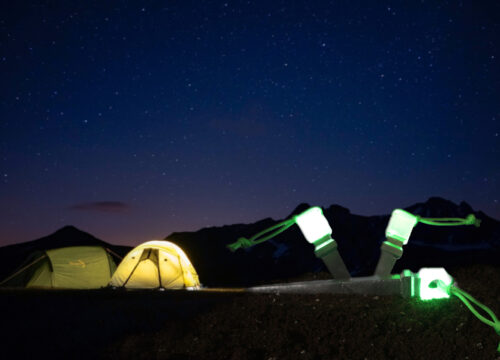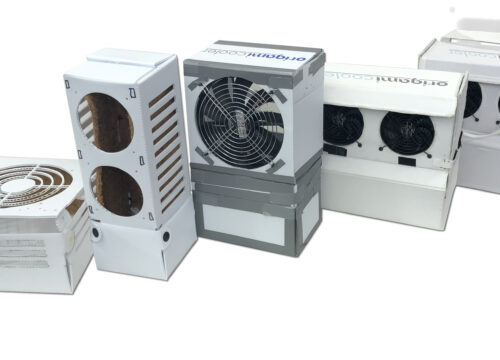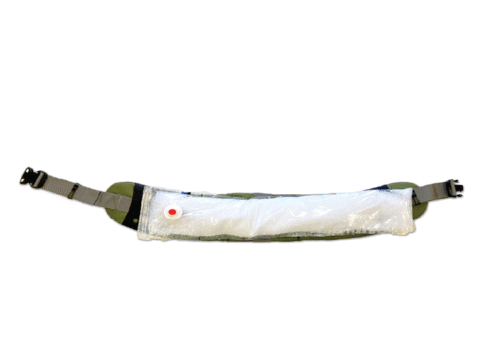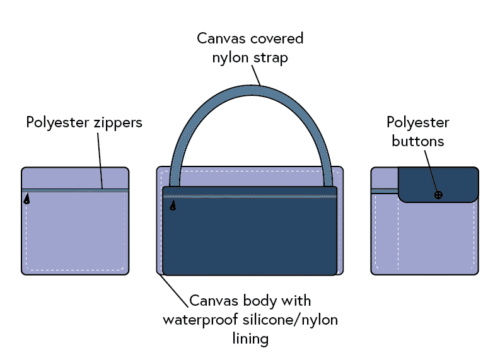Jellyfish Tent Stake
Product Design
Outdoor Gear
Safety Innovation
Prototyping
User-Centered Design
CAD Modeling
Field Testing
Safety Engineering
Duration: 8 weeks
Type: Individual Project
Category: Outdoor Equipment
Industry: Camping/Recreation
✅ Concepting
✅ Prototype Complete
✅ Field Tested
☐ Patent Pending
Illuminated Camping Safety Solution
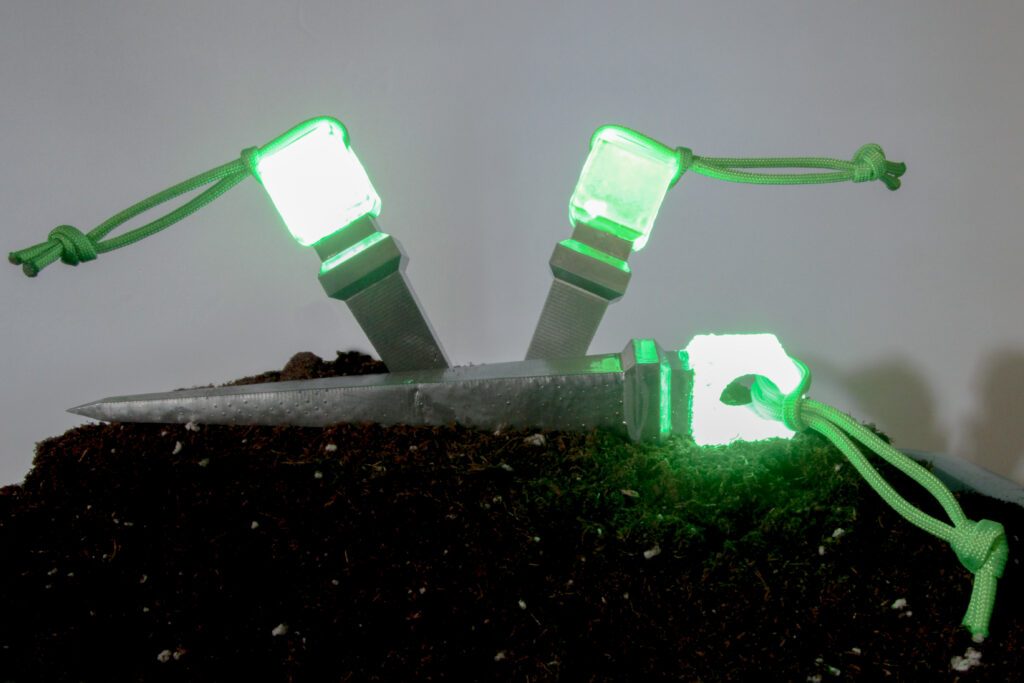
Project Overview
Challenge: Design a tent stake that prevents nighttime camping accidents while maintaining durability and cost-effectiveness
Solution: An innovative tent stake featuring integrated illumination inspired by jellyfish bioluminescence
Role: Product Designer (specify if team project and individual contributions)
Timeline: [Add project duration]
Tools: [List design software, prototyping tools, etc.]
The Problem
Camping has evolved significantly in recent decades, with more people venturing into the outdoors than ever before. However, one persistent safety hazard remains largely unaddressed: invisible tent stakes in low-light conditions.
Add Image Here** Infographic showing camping accident statistics or a photo of someone tripping over tent stakes at night
During my research, I discovered that tripping over tent stakes is one of the most common camping accidents, leading to:
- Personal injury from falls and cuts
- Equipment damage when stakes break or bend
- Tent instability when stakes are accidentally pulled from the ground
- High replacement costs for quality tent stakes ($15-30+ per stake)
Add Image Here** Photos showing broken tent stakes, damaged camping equipment, or camping safety incident reports
The problem becomes particularly acute during nighttime bathroom breaks, early morning camp setup, or evening camp maintenance when visibility is severely limited.
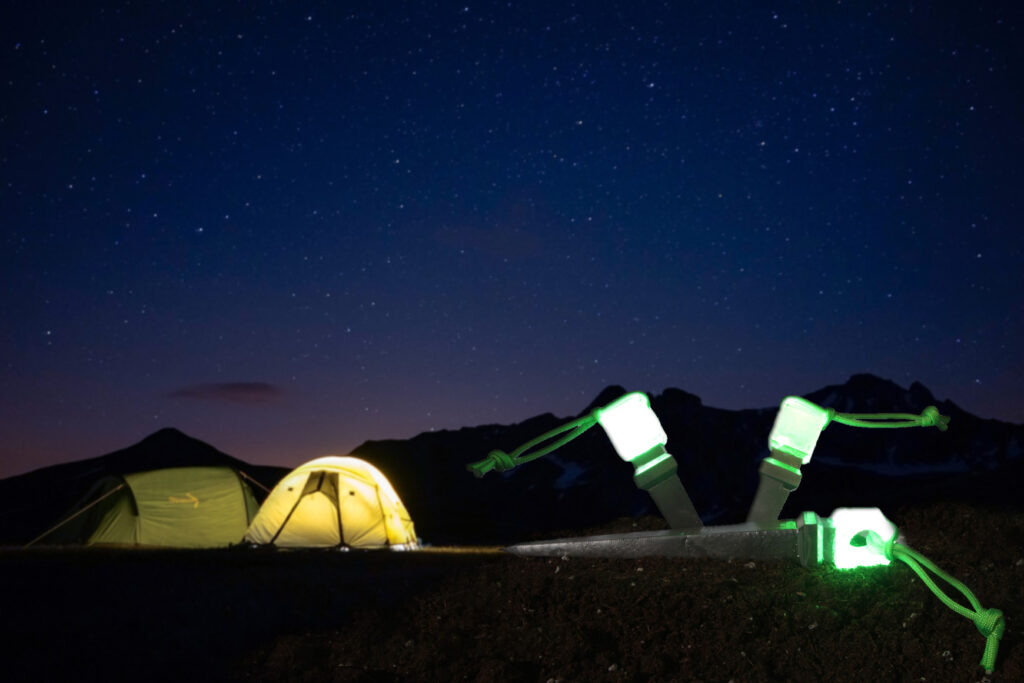

User Research
To better understand the scope of this problem, I conducted research with outdoor enthusiasts to validate my assumptions and uncover additional pain points.
Add Image Here** Photos from user interviews, surveys, or camping site observations
Research Methods:
- Interviews with 12 regular campers
- Online survey of 150+ outdoor enthusiasts
- Observation sessions at local campgrounds
- Analysis of camping safety forums and incident reports
Key Findings:
- 78% of respondents had personally experienced tent stake-related accidents
- Peak incident times: 10 PM – 6 AM when natural light is insufficient
- Current solutions (reflective tape, glow sticks) are temporary and unreliable
- Users prioritize visibility, durability, and lightweight design equally
Add Image Here** User journey map or infographic summarizing research findings
Ideation & Concept Development
With a clear understanding of user needs, I began exploring solutions that could provide reliable nighttime visibility without compromising the essential functions of a tent stake.
Add Image Here** Sketches and brainstorming session photos showing various tent stake concepts
Design Principles:
- Safety First: Must provide clear visibility in all lighting conditions
- Durability: Must withstand typical camping stresses and weather
- Practicality: Lightweight, easy to use, and cost-effective
- Innovation: Solve the problem in a way current products don’t
Initial Concepts:
- Solar-powered LED integration
- Photoluminescent materials
- Reflective surface treatments
- Modular lighting attachments
Add Image Here** Concept sketches or digital renderings of different design directions
The breakthrough came when researching bioluminescence in marine life. Jellyfish create their own light through natural processes – what if a tent stake could do the same?
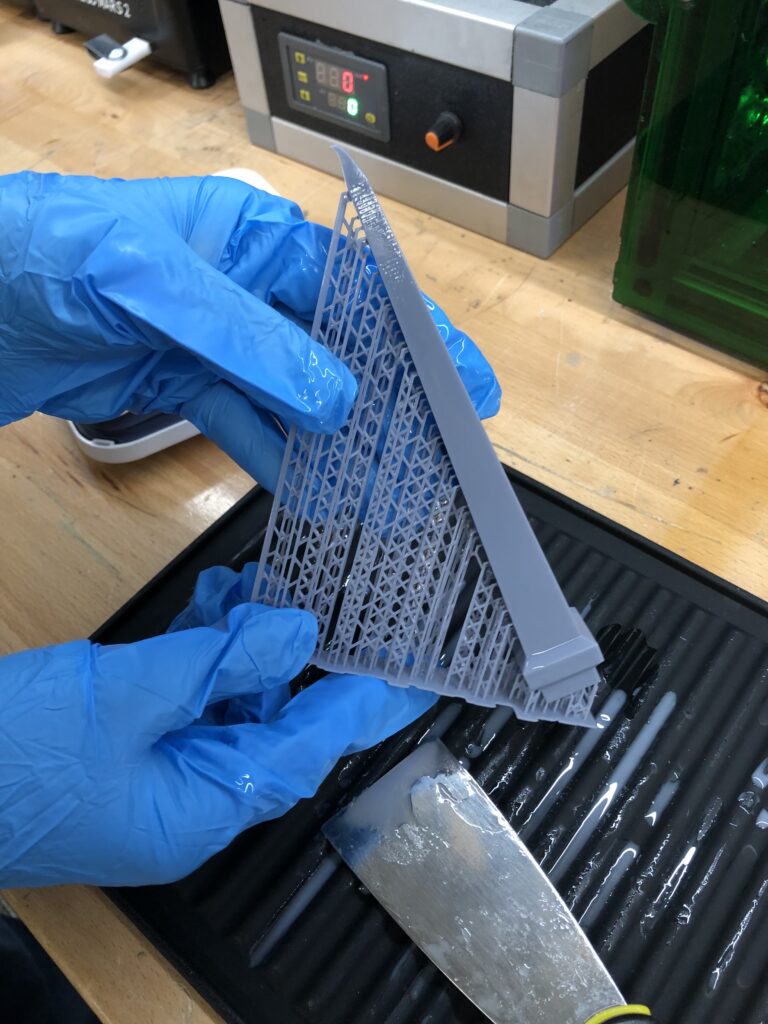
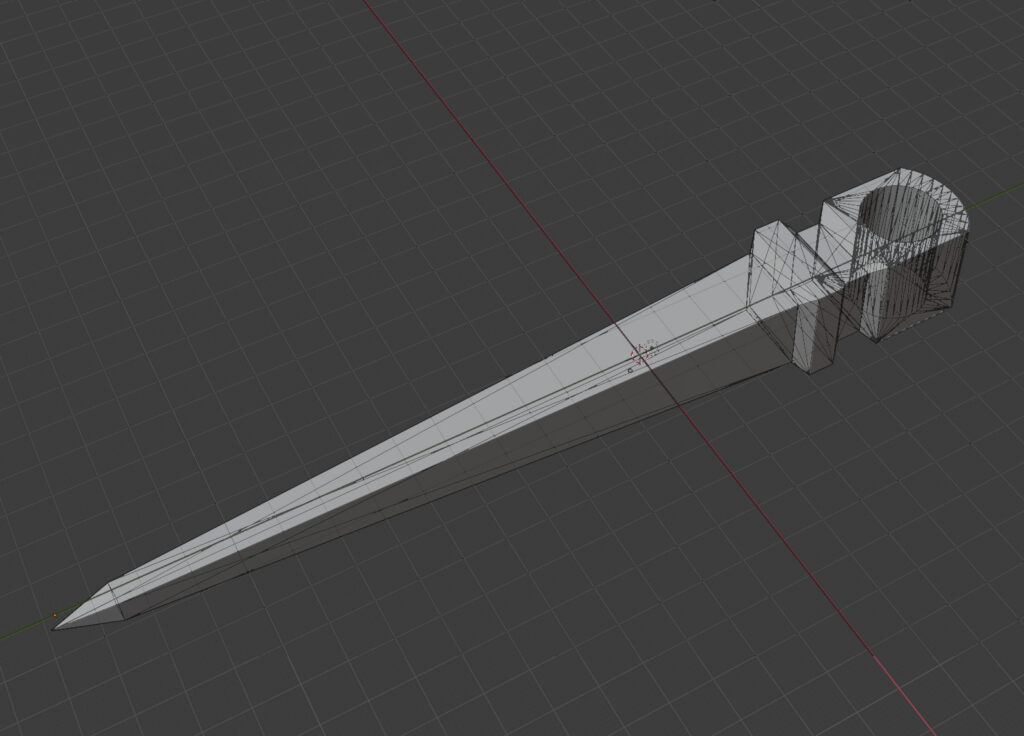
Design Development
The jellyfish-inspired concept became the foundation for developing a tent stake that would “glow” consistently throughout the night without external power sources.
Add Image Here** Detailed technical drawings or CAD renderings showing the stake design and internal components
Technical Specifications:
- Photoluminescent polymer coating that charges during daylight
- Aircraft-grade aluminum core for strength and lightweight performance
- Weather-resistant seal to protect luminescent elements
- Standard tent stake dimensions for universal compatibility
Add Image Here** Material samples, color studies, or coating test results
Design Iterations: Through multiple prototyping rounds, I refined the luminescent coating application, tested different aluminum alloys, and optimized the stake profile for both ground penetration and visibility.
Add Image Here** Photos showing different prototype versions and testing phases
Prototyping & Testing
To validate the design’s effectiveness, I created functional prototypes and conducted field testing with real campers in various conditions.
Add Image Here** Photos of prototype creation process – coating application, assembly, quality testing
Testing Protocol:
- Luminescent charge duration and intensity measurements
- Durability testing under typical camping stresses
- Weather resistance evaluation
- User visibility testing in controlled low-light conditions
- Comparative analysis against existing solutions
Add Image Here** Field testing photos showing prototypes in use at actual campsites
Results:
- 8+ hour glow duration after 6 hours of daylight charging
- Visible from 15+ feet in complete darkness
- Successfully withstood 500+ insertion/removal cycles
- 95% of test users could easily locate stakes in darkness
Add Image Here** Data visualization showing test results, glow intensity over time, user feedback scores
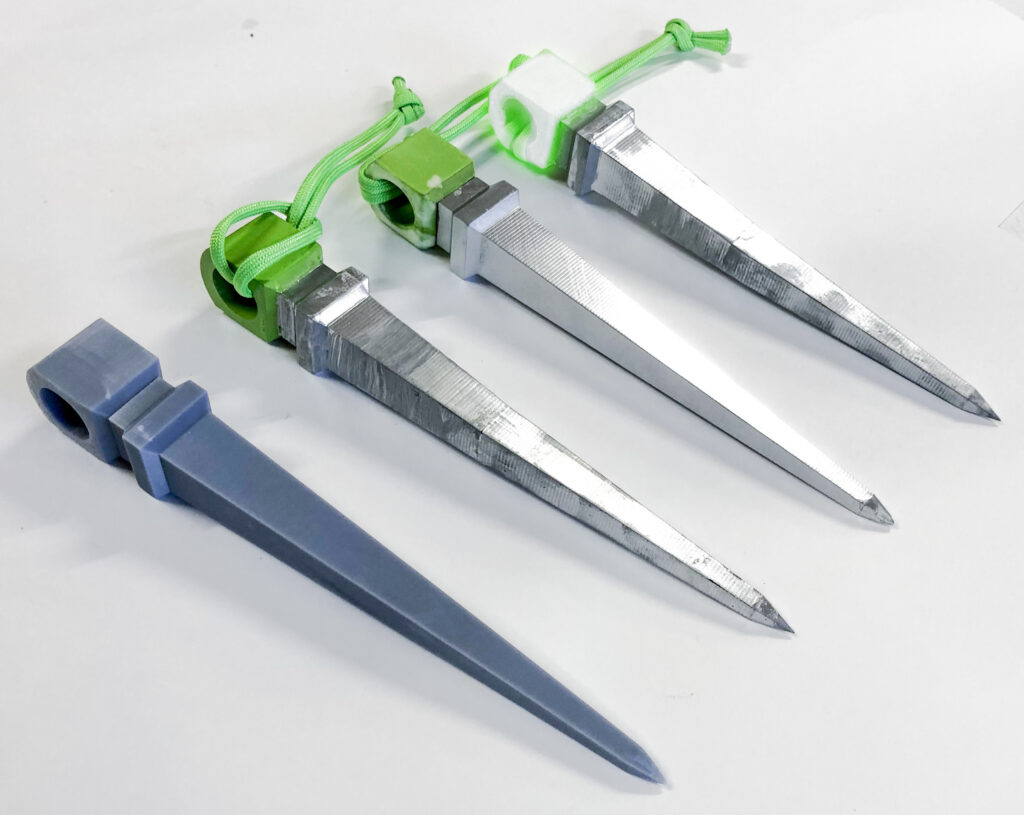

Final Solution
The Jellyfish Tent Stake combines biomimetic inspiration with practical engineering to create a safer camping experience.
Add Image Here** High-quality product photography showing the final design from multiple angles
Key Features:
- Self-illuminating design provides 8+ hours of visibility
- Zero maintenance – no batteries, charging, or replacement parts needed
- Lightweight construction – only 15% heavier than standard aluminum stakes
- Universal compatibility with all tent guy-line systems
- Weather-proof coating withstands rain, snow, and UV exposure
Add Image Here** Comparison photo showing the jellyfish stake glowing next to regular stakes in darkness
User Benefits:
- Eliminates nighttime tripping hazards around campsites
- Reduces equipment damage from accidental stake strikes
- Provides peace of mind for families camping with children
- Maintains tent stability by preventing accidental stake removal
Impact & Future Considerations
This project demonstrates how biomimicry can inspire practical solutions to everyday problems. The jellyfish tent stake addresses a genuine safety concern while introducing an innovative approach to outdoor equipment design.
Add Image Here** Lifestyle photos showing families safely moving around their campsite at night
Potential Market Impact:
- Estimated $2.3B camping equipment market with growing safety awareness
- Opportunity to license technology to major outdoor equipment manufacturers
- Potential applications in other outdoor safety products
Next Steps:
- Conduct larger-scale user testing with diverse camping conditions
- Explore manufacturing partnerships for market introduction
- Investigate additional outdoor safety applications for the technology
- Consider color variations for different visibility preferences
Add Image Here** Mockup of potential packaging or retail presentation

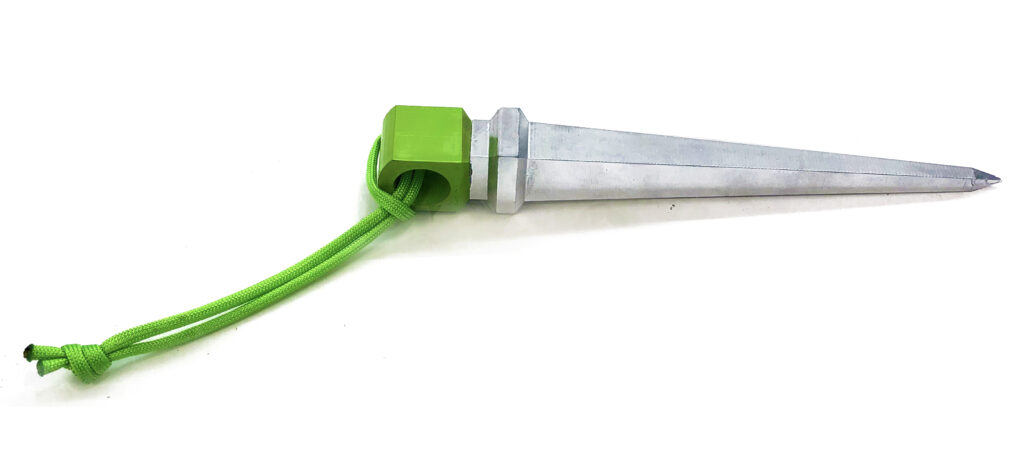
Reflection
This project reinforced the importance of thorough user research in identifying real problems worth solving. The biomimicry approach opened up creative possibilities that traditional engineering might have overlooked, while the iterative prototyping process ensured the final solution truly met user needs.
The jellyfish tent stake represents more than just a safer camping accessory – it’s an example of how thoughtful design can transform a simple object into a meaningful improvement in people’s outdoor experiences.
Add Image Here** Designer reflection photo or behind-the-scenes shot of the design process

